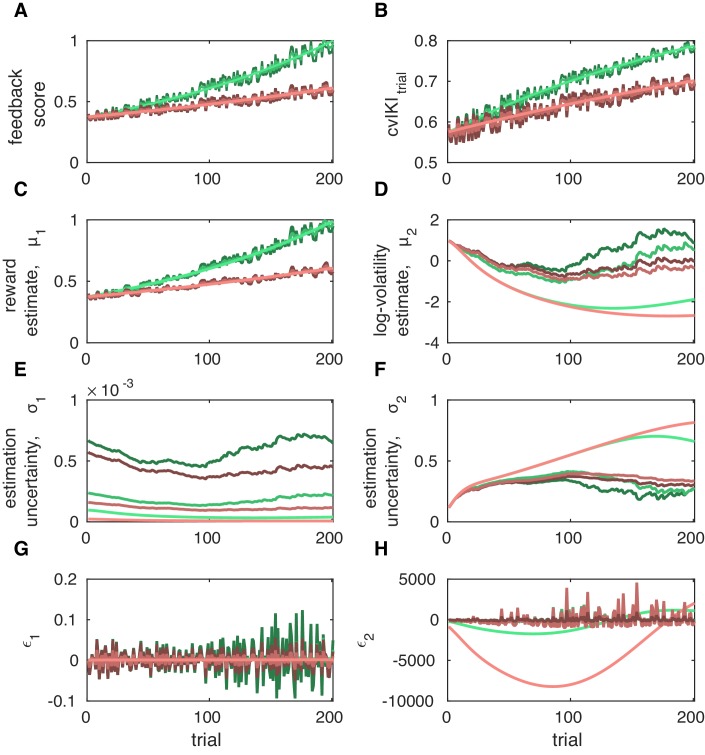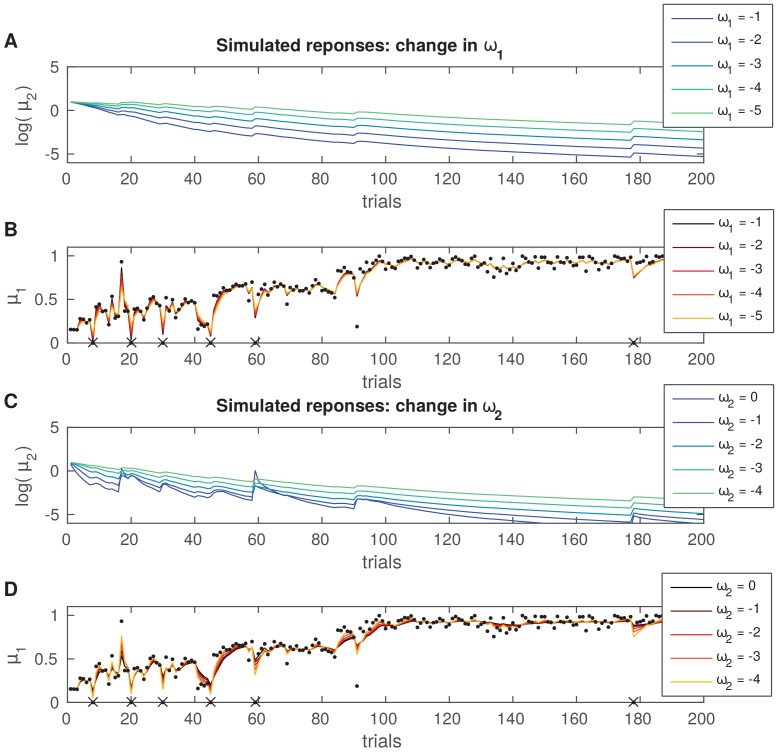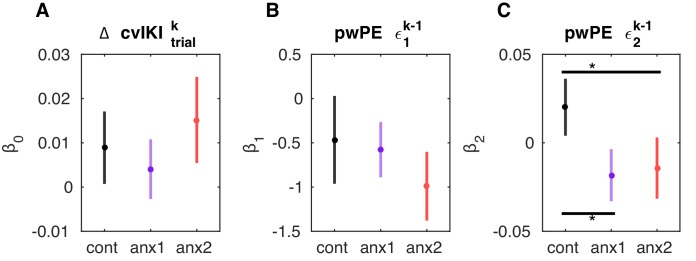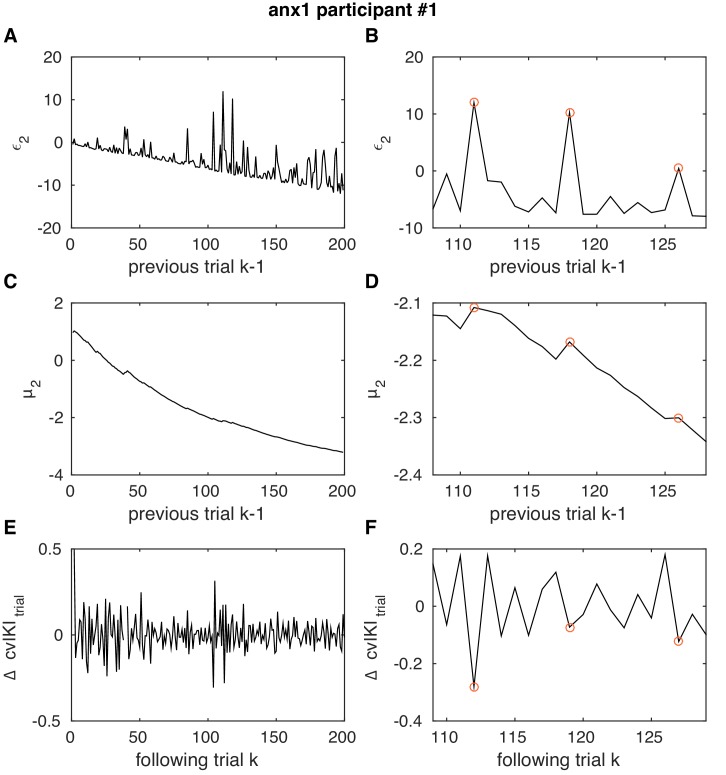Figure 5. Two-level Hierarchical Gaussian Filter for continuous inputs.
(A) Schematic of the two-level HGF, which models how an agent infers a hidden state in the environment (a random variable), , as well as its rate of change over time (, environmental volatility). Beliefs about those two hierarchically related hidden states (, ) at trial are updated by the sensory input (, observed feedback scores in our study) for that trial via prediction errors (PEs). The states and are continuous variables evolving as coupled Gaussian random walks, where the step size (variance) of the random walk depends on a set of parameters (shown in yellow boxes). The lowest level is coupled to the level above through the variance of the random walk: . The posterior distribution of beliefs about these states is fully determined by the sufficient statistics (mean) and (variance) for levels . The equations describing how expectations () change from trial to are Equation 6 and Equation 10. The response model generates the most probable response, , according to the current beliefs, and is modulated by the response model parameters . In the winning model, the response parameter was the change between trial and in the degree of temporal variability across keystrokes: , normalized to range 0–1. (B, C) Example of belief trajectories (mean, variance) associated with the two levels of the HGF for continuous inputs. Panel (C) displays the expectation on the first level, , which represents an individual’s expectation (posterior mean) of the true reward values for the trial, . Black dots represent the trial-wise input (feedback scores, ). Panel (B) shows the trial-by-trial beliefs about log-volatility , determined by the expectation and associated variance. Shaded areas denote the variance or estimation uncertainty on that level. (D) Illustration of the performance measure used as response in the winning model, .







